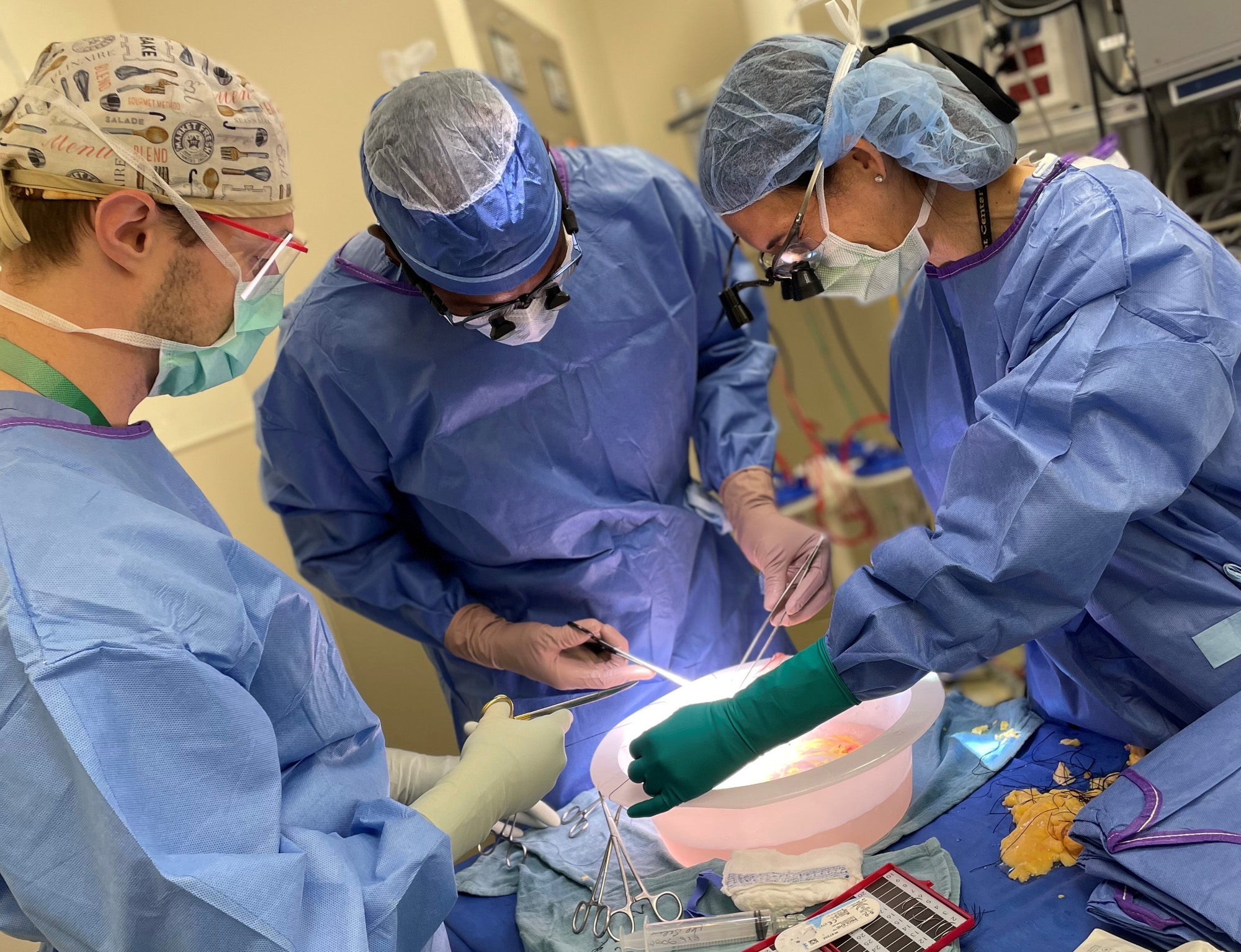It was truly a Labor Day weekend to remember at Vanderbilt University Medical Center, where transplant teams performed 10 kidney transplants in two days — and that was before even getting to Labor Day.
Kidney transplant teams, many members who had to be called in, performed five transplants on Saturday, Aug. 31, and another five transplants on Sunday, Sept. 1.
By Labor Day, 10 people had new kidneys and were in rooms on the transplant floor, the sixth floor of Medical Center East, in addition to transplant patients who had received other organs.
“A labor of love,” said Rachel Forbes, MD, MBA, associate professor of Surgery and chief of the Division of Kidney & Pancreas Transplantation. Normally, she said, teams will perform one or two kidney transplants per day, with some days without kidney transplants.
“It’s rare we do five transplants in 24 hours, and we did that on two consecutive days,” Forbes said. “It takes an army for that to happen. It also takes those on call working to the max and those not on call working when they didn’t expect or have to. It takes the support of the operating room and anesthesia teams as well as our excellent 6MCE transplant unit.”
All Hands on Deck
Thanks to the operating room and anesthesia teams, two operating rooms staffed by several anesthesiologists and surgical teams were opened for the multiple kidney transplants. B. John DuBray, MD, was the surgeon-on-call for the weekend while Kelly Birdwell, MD, MSCI, was the transplant nephrologist on call. Additionally, the OR staff included the call teams of surgical technologists Andie Lee Perona and Janise Malatesta, RN, as well as surgical technologist Sandy Swint, who came in for the weekend.
Shawna Willoughby, RN, and Morgan Rangel, RN, also took the organ calls and coordination. Sean Kisch, MD, general surgery resident and Tina Nguyen, MSN, AGACNP-BC, also did heavy lifting for the weekend. Forbes, Wali Johnson, MD, and Kaitlyn Tracy, MD, were additional surgeons and residents who performed transplants to meet the needs.
Anesthesia colleagues were Saad Hashmi, MD; Brian Poore, MD; Kenneth Holroyd, MD; William Chang, MD; Nicholas Statzer, MD; Meera Chandrashekar, MBBS; Jeanette Bauchat, MD; and Carey Camille Roberts, MD. Julie Brown, RN, was also part of the medical team.
“The dedication and teamwork that are exhibited by the multiple service lines involved and the 6 MCE transplant unit to make this happen is truly remarkable,” said Heidi Schaefer, MD, professor of Medicine and medical director of Adult Solid Organ Transplant. “Our patients are so appreciative of the efforts put forth to give them this lifesaving gift. “
Why were there so many kidney transplants in a weekend?
Forbes said it was purely happenstance. All the transplants were the result of matching kidneys from deceased donors being discovered at once for 10 patients. None of the patients over the 48-hour period were there for living donor kidney transplants, which can be scheduled in advance.
Each of the patients relies on a pretransplant coordinator to inform them of their potential transplant and to help them get ready, and coordinators worked around the clock to make it happen. Posttransplant coordinators were ready to work with patients once transplanted. All told, it takes a highly specialized, multidisciplinary team of about 150 people to work on a single transplant. The transplant teams include physicians in each organ specialty, surgeons, anesthesiologists and nurse anesthetists, intensivists, nurses, nurse practitioners, pharmacists, social workers, financial coordinators, nutritionists, organ procurement coordinators, preservationists, perfusionists and operating room staff, among others.
“This is a testament to the amazing people that work within the Vanderbilt Transplant Center,” said Joseph Magliocca, MD, professor of Surgery and director of the Vanderbilt Transplant Center. “The number of people who stepped up and went above and beyond the call of duty is just remarkable. The thing that is more remarkable is that they do this on a routine basis and never think twice about it. Outstanding patient care is always the No. 1 priority.”
